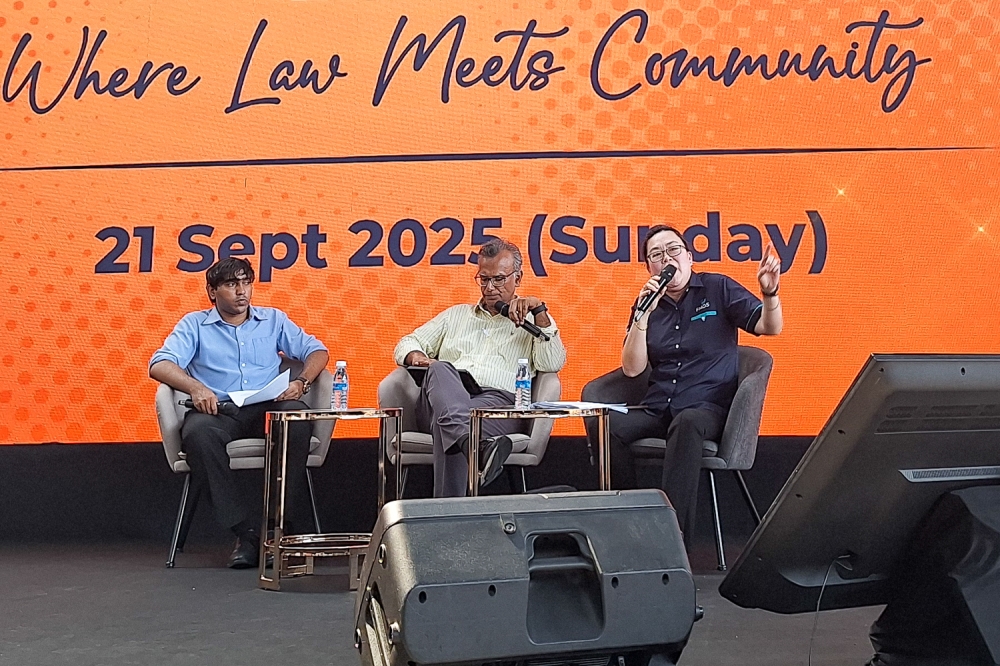KUALA LUMPUR, Oct 6 — Scams in Malaysia tend to change with the seasons, from “angpow” scams during Chinese New Year to income tax scams during the annual tax filing with the Inland Revenue Board (LHDN), and even durian scams where victims are duped after clicking links or using apps to buy fruit.
According to Financial Markets Ombudsman Service (FMOS) ombudsman Winnie Chan, such scams are so prevalent that Malaysians must stay vigilant to protect their hard-earned money.
But what if you do get scammed and want to recover your money? The independent body FMOS offers free assistance.
For instance, you might click on a link to buy durian at a bargain price, only to find your credit card maxed out or your entire bank account wiped clean within minutes.
“How do you recover the loss? ‘I really thought it was durian, I really thought, you know’. When you click on the link, the malware starts to come in, and it will drain your account,” Chan said, giving an example at a “Scam Prevention and Awareness” talk during the recent Malaysian Bar’s MyBar Carnival.
How to avoid getting scammed?
- Be careful not to click on links blindly, as they could lead to malware.
- Be wary of phishing sites, which may look like legitimate websites but are actually fakes created by scammers.
- Be aware that scammers can “spoof” phone numbers, making the phone number they are calling from look like the official phone numbers of banks or institutions.
“Scammers are out there to take your money. So do something about it, be vigilant, learn about the scams before it happens,” Chan said.
“At the end of the day, it is the account holder, credit card holder, and debit card holder’s responsibility to protect their own account. Don’t reveal your pin to other people, that’s very basic,” she added.
She also shared that there have been cases where scam victims, who would normally never reveal their credit card pin to anyone, ended up giving it to scammers impersonating authorities such as the Malaysian Anti-Corruption Commission (MACC).
“When you are frightened, when you receive a call like that, you can’t think properly. You take your credit card out, repeat number by number, every number,” she said.
“You tell yourself, no way I will reveal my credit card details, pin number to a third party. But when someone scares you like that, you reveal everything. Then when you put down the phone, ‘Oh dear, betulkah just now the phone call?’ You wake up and you quickly call your bank,” she said.
‘I got scammed, what is the first thing I should do?’
Step one: Tell your bank immediately
“The moment you discover you have been scammed, you should report it to the bank hotline ASAP,” she said.
If the scammers gave you a phone number that they say belongs to the bank, be careful as it might not actually be the bank’s number. Call your bank’s official number.
“Because timeliness is very important. The moment you report to the bank, the bank can secure your account,” she said.
If you have banking apps on your phone, you can also use the “Kill Switch” function to immediately lock your bank account to prevent money from flowing out to the scammers.
Step two: Report the scam to the National Scam Response Centre (NSRC) and file a police report
Having noted that anyone can get scammed, Chan said you should check in with your family members if they become quiet, as they may feel embarrassed to admit they have been cheated and may not know what to do next.

Financial Markets Ombudsman Service (FMOS) ombudsman Winnie Chan said the FMOS wants to help protect those who were scammed. She is seen here at a talk at the Malaysian Bar’s MyBar Carnival to spread awareness on scams. — Picture by Ida Lim
At what stage should you ask FMOS for help in getting money back?
First, file a complaint with your bank (for example, about unauthorised transactions on your credit card). The bank will have 60 days to investigate and respond to your complaint.
If you are not happy with the bank’s decision on your complaint, you can then proceed to file a complaint with FMOS for free.
“We want the community, the public, to know that, even if you lose your money, if you have a complaint against the bank, you can come to us and file a dispute,” Chan said, adding that FMOS would hear out complaints no matter how small or big the sum involved is.
She said FMOS would investigate whether the customer is at fault or has grounds to claim for the financial loss; or whether the bank is at fault (such as whether there was any system breach, or whether it had verified suspicious transactions with the account holder).
The complaint to FMOS would first go through mediation to help you and the bank to settle the case.
If mediation fails, the complaint would go to an FMOS ombudsman like Chan, who would act as an adjudicator to independently decide on the case.
If the ombudsman decides that the bank is at fault, the decision is binding on the bank and it must pay to cover the losses you had suffered.
“But we are also very fair, if it’s really not the bank’s fault, we also cannot allow the claim,” she told Malay Mail.
She cited examples of actual cases where the bank’s systems were not at fault, such as when bank officers had already warned a customer that they were being scammed, but the customer insists on transferring their money out.
In some cases, banks had called in family members or the police to help prevent a customer from sending money to scammers.
She said scammers are now “recycling” their modus operandi to bypass the multiple security features of online banking and target vulnerable and older people by getting them to physically deposit money at banks.
What happens after the FMOS ombudsman’s decision
The ombudsman’s decision is final, so you cannot appeal it.
If you disagree with the FMOS decision (such as when it finds you were responsible for the money lost to scammers), you can file a court case.
The best thing about going to FMOS first is that it is free, so you can try to settle the dispute without going through the courts or paying for lawyers.
To learn more about using FMOS as an alternative to the courts, visit FMOS’s website.






